La gestion de l'internet des objets s'apparente en quelque sorte à la gestion d'une colonie de fourmis. Comme les fourmis, chaque appareil d'un réseau a une mission et, dans de nombreux cas, ces appareils sont légion. IoT La gestion des appareils est cruciale pour l'accès et la maintenance des appareils qui effectuent des tâches et des rapports de données dans les applications critiques. Ces appareils doivent faire l'objet d'un contrôle de sécurité et de disponibilité, et être mis à jour avec des correctifs et des améliorations. Pour permettre aux administrateurs d'effectuer ces tâches, les déploiements dans l'internet des objets doivent être intégrés aux outils de gestion des applications IoT .
Par exemple, si un appareil se déconnecte, un administrateur devra être en mesure d'accéder à cet appareil pour le dépanner. Ce n'est qu'un exemple, mais il est important. Le dispositif hors ligne peut se trouver à plusieurs kilomètres de distance, ou être installé à l'intérieur d'un énorme réservoir industriel, ou au sommet d'un poteau d'éclairage. Et il peut être aussi important qu'un appareil installé dans un centre de données au bout du couloir.
Dans ce billet de blog, nous fournirons des informations supplémentaires sur la gestion des dispositifs IoT , y compris des cas d'utilisation qui illustrent l'importance cruciale d'outils sécurisés et de haute qualité pour la gestion, le suivi, l'automatisation et la maintenance des connexions à distance IoT .
Qu'est-ce que IoT Device Management ?
 IoT La gestion des appareils est la capacité d'accéder, de diagnostiquer et de gérer à distance les fonctionnalités de vos appareils déployés sur IoT . Plusieurs facteurs clés illustrent pourquoi cette capacité est essentielle.
IoT La gestion des appareils est la capacité d'accéder, de diagnostiquer et de gérer à distance les fonctionnalités de vos appareils déployés sur IoT . Plusieurs facteurs clés illustrent pourquoi cette capacité est essentielle.
Ces facteurs comprennent la taille de votre réseau, l'accessibilité physique des appareils et la dispersion géographique de vos appareils. Indépendamment de leur nombre ou de leur emplacement, vous devrez vérifier ces appareils et mettre périodiquement à jour leurs capacités et leur intelligence au moyen de mises à jour du micrologiciel, ou télécharger des correctifs de sécurité pour vous assurer qu'ils sont à jour, sécurisés et conformes.
 Exemples de cas d'utilisation :
Exemples de cas d'utilisation :
- Vous disposez d'un grand nombre d'appareils - des dizaines, des centaines ou des milliers - et vous devez pouvoir y accéder de manière sécurisée à partir d'un emplacement distant ou central pour mettre à jour les micrologiciels et obtenir des informations sur l'état de santé de ces appareils.
- Vos appareils sont déployés dans des endroits mobiles, difficiles d'accès ou physiquement dangereux. Les appareils Digi IoT , par exemple, sont installés dans des bus, des trains, des intersections de villes, des puits, des mines, le haut des lampadaires et des feux de signalisation, des ponts et des barrages, des silos à grains, des usines de traitement de l'eau, des installations de fabrication, des réservoirs industriels et d'autres applications distantes.
- Vous devez être alerté de certaines conditions, comme la mise hors ligne inattendue d'un appareil, une tentative de violation de la sécurité ou la nécessité de remplacer la batterie.
- Vous voulez utiliser vos ressources humaines à bon escient, et n'envoyer du personnel sur les sites que lorsque cela est nécessaire, et non pour des contrôles de routine inutiles lorsque tout va bien.
- Vos appareils sont installés dans des applications critiques, et les temps d'arrêt ou les pannes peuvent coûter cher à votre entreprise en termes de perte de revenus ou d'amendes.
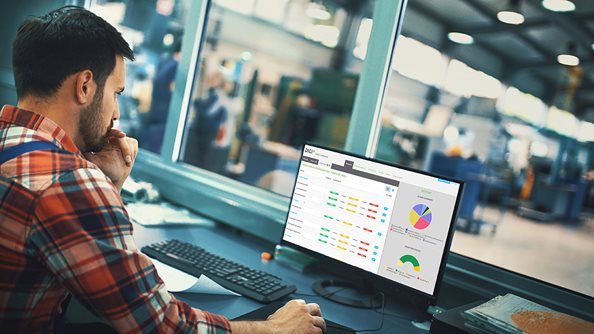 Digi Remote Manager®, fournit ces informations et ces capacités à partir d'un "seul panneau de verre".
Digi Remote Manager®, fournit ces informations et ces capacités à partir d'un "seul panneau de verre".
Sans cette fonctionnalité essentielle, les gestionnaires de réseau IoT ne peuvent pas surveiller de manière proactive leur réseau de dispositifs déployés ou maintenir leur sécurité à jour, ce qui peut rendre les dispositifs vulnérables, obsolètes, non conformes et inaccessibles.
Les bases de la gestion des dispositifs IoT
 IoT La gestion des dispositifs de la passerelle comprend plusieurs étapes différentes pour intégrer un dispositif dans un réseau, le surveiller et garantir son bon fonctionnement et sa disponibilité.
IoT La gestion des dispositifs de la passerelle comprend plusieurs étapes différentes pour intégrer un dispositif dans un réseau, le surveiller et garantir son bon fonctionnement et sa disponibilité.
Approvisionnement
 Le provisionnement des dispositifs est la première étape de la gestion du site IoT . Cette étape est destinée à la première installation afin de créer un compte, de configurer la connexion réseau, etc. Le provisionnement est similaire à la configuration, comme nous allons le voir. Ces deux processus impliquent la personnalisation de votre appareil. Le provisionnement modifie les paramètres d'origine de l'appareil en fonction de ceux requis pour l'intégrer à votre réseau. La configuration peut être effectuée à tout moment.
Le provisionnement des dispositifs est la première étape de la gestion du site IoT . Cette étape est destinée à la première installation afin de créer un compte, de configurer la connexion réseau, etc. Le provisionnement est similaire à la configuration, comme nous allons le voir. Ces deux processus impliquent la personnalisation de votre appareil. Le provisionnement modifie les paramètres d'origine de l'appareil en fonction de ceux requis pour l'intégrer à votre réseau. La configuration peut être effectuée à tout moment.
Digi Remote Manager permet configuration sans contact pour un premier approvisionnement permettant une installation sur site rapide, précise et rentable, ainsi qu'une configuration à distance chaque fois que des mises à jour sont nécessaires.
Authentification
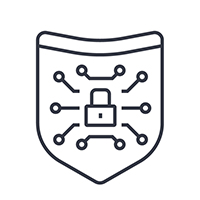 L'authentification est le processus qui consiste à confirmer l'identité d'un dispositif lorsqu'il est inscrit dans le système IoT , et à authentifier les utilisateurs lors de la connexion.
L'authentification est le processus qui consiste à confirmer l'identité d'un dispositif lorsqu'il est inscrit dans le système IoT , et à authentifier les utilisateurs lors de la connexion.
La gestion de l'identité et l'authentification des appareils sur IoT permettent de s'assurer que seuls les appareils autorisés sont inscrits, afin d'éviter les intrusions et de préserver la confidentialité des informations exclusives.
Pour permettre l'authentification, les administrateurs établissent les paramètres de sécurité du périphérique et du réseau afin que les tentatives d'accès puissent être autorisées ou bloquées.
Configuration
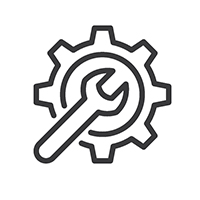 IoT La gestion de la configuration, comme nous l'avons vu dans la section sur le provisionnement, est une méthode permettant de personnaliser les fonctionnalités de votre dispositif IoT . Par exemple, vous pouvez ajouter une sophistication et une intelligence supplémentaires à un appareil, optimiser ses fonctionnalités avec du code supplémentaire ou réviser ses paramètres en fonction de nouvelles exigences.
IoT La gestion de la configuration, comme nous l'avons vu dans la section sur le provisionnement, est une méthode permettant de personnaliser les fonctionnalités de votre dispositif IoT . Par exemple, vous pouvez ajouter une sophistication et une intelligence supplémentaires à un appareil, optimiser ses fonctionnalités avec du code supplémentaire ou réviser ses paramètres en fonction de nouvelles exigences.
Les appareils et les réseaux étant des organismes vivants, ils nécessitent souvent une configuration supplémentaire au-delà de la phase initiale de provisionnement. Il est important de pouvoir configurer un ou plusieurs appareils de manière efficace, sécurisée et à distance, à chaque fois que le besoin s'en fait sentir. Digi Remote Manager offre la possibilité de configurer un nombre illimité d'appareils en une seule fois, même si le groupe d'appareils à configurer a été initialement approvisionné avec exactement la même fonctionnalité.
Contrôle
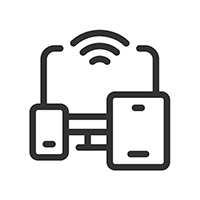 Une fois les appareils authentifiés, configurés, installés et connectés au réseau, vous devez pouvoir les contrôler à distance. Dans la plupart des cas, le comportement des appareils sera établi lors des phases de provisionnement et d'authentification afin d'automatiser les processus de l'appareil. Par exemple, vous pouvez lancer des processus tels que turning on frost fans pour la gestion des cultures, établir une fonctionnalité d'informatique périphérique, des comportements de réveil et de rapport et des communications entre capteurs et passerelles.
Une fois les appareils authentifiés, configurés, installés et connectés au réseau, vous devez pouvoir les contrôler à distance. Dans la plupart des cas, le comportement des appareils sera établi lors des phases de provisionnement et d'authentification afin d'automatiser les processus de l'appareil. Par exemple, vous pouvez lancer des processus tels que turning on frost fans pour la gestion des cultures, établir une fonctionnalité d'informatique périphérique, des comportements de réveil et de rapport et des communications entre capteurs et passerelles.
Cependant, les administrateurs ont également besoin des capacités de contrôle des appareils du site IoT afin d'accéder aux appareils du réseau de plusieurs manières au fil du temps. En voici quelques exemples :
- Passer outre les processus automatisés pour les besoins d'applications à court terme
- Ajustement des paramètres
- Redémarrage à distance des appareils
- S'assurer que chaque appareil est opérationnel et optimisé pour fonctionner selon les besoins de l'application.
Digi Remote Manager fournit un accès et un contrôle à distance à l'ensemble de votre réseau d'appareils, quel que soit le nombre d'appareils ou leur emplacement géographique. En plus de l'accès aux appareils Digi, Digi RM permet un accès sécurisé et hors bande aux automates et autres appareils distants via une connexion série.
Surveillance
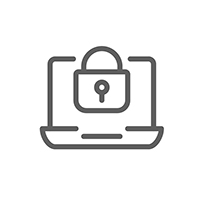 La surveillance à distance de vos appareils IoT est l'un des principaux objectifs de la gestion des appareils IoT , qui prend en charge une série d'objectifs d'application :
La surveillance à distance de vos appareils IoT est l'un des principaux objectifs de la gestion des appareils IoT , qui prend en charge une série d'objectifs d'application :
- Mesures du système: Visualisez le temps de fonctionnement des appareils et d'autres événements survenant sur le réseau à partir d'un tableau de bord.
- Rapports sur les données: Obtenez des informations essentielles sur les points de données définis par l'utilisateur. Ces points de données peuvent inclure des mesures telles que les niveaux des réservoirs, la température des coulées de béton et d'autres données de capteurs. Grâce à ces informations
- Notifications: Établissez des notifications définies par l'utilisateur pour les événements afin de soutenir les décisions critiques et la maintenance prédictive. Pour éviter les pannes de système critiques, la perte de données ou la dégradation des performances, les administrateurs doivent être informés des changements survenant sur le réseau et susceptibles d'affecter les performances.
- Sécurité: L'un des principaux avantages d'une plateforme de gestion des dispositifs hautement intégrée ( IoT ), telle que Digi Remote Manager, est la capacité de détecter et de corriger les violations de la sécurité, telles que les tentatives de modification de la configuration des dispositifs, et de fournir des notifications aux administrateurs du système sur ces événements.
Diagnostics
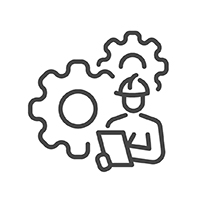 Grâce aux processus de gestion des périphériques IoT mis en place et dont nous avons parlé jusqu'à présent, les administrateurs ont la possibilité d'effectuer des diagnostics sur la santé de l'ensemble du réseau de périphériques, ainsi que sur celle de chaque périphérique individuel. Ces processus permettent aux administrateurs d'effectuer des diagnostics à partir d'une plateforme de gestion, afin de résoudre les problèmes et d'y remédier rapidement et efficacement.
Grâce aux processus de gestion des périphériques IoT mis en place et dont nous avons parlé jusqu'à présent, les administrateurs ont la possibilité d'effectuer des diagnostics sur la santé de l'ensemble du réseau de périphériques, ainsi que sur celle de chaque périphérique individuel. Ces processus permettent aux administrateurs d'effectuer des diagnostics à partir d'une plateforme de gestion, afin de résoudre les problèmes et d'y remédier rapidement et efficacement.
La possibilité d'effectuer des diagnostics à distance présente de multiples avantages :
- Identifier rapidement les problèmes du système, afin d'éviter des temps d'arrêt coûteux.
- Corriger les problèmes à distance, y compris la possibilité d'accéder à des dispositifs qui sont hors ligne "hors bande".
- Éviter les déplacements coûteux des camions pour résoudre les problèmes.
Mises à jour des logiciels
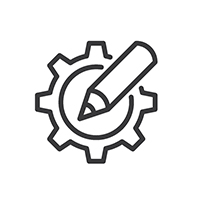 IoT Les appareils d'aujourd'hui sont intelligents et possèdent des attributs sophistiqués définis par logiciel pour gérer leurs fonctionnalités et leur sécurité. Les logiciels donnent vie aux appareils IoT , établissent leur rôle dans le réseau d'appareils, activent leur fonctionnalité de calcul périphérique et gèrent la prévention des virus et des cyberattaques.
IoT Les appareils d'aujourd'hui sont intelligents et possèdent des attributs sophistiqués définis par logiciel pour gérer leurs fonctionnalités et leur sécurité. Les logiciels donnent vie aux appareils IoT , établissent leur rôle dans le réseau d'appareils, activent leur fonctionnalité de calcul périphérique et gèrent la prévention des virus et des cyberattaques.
Pour que les appareils IoT fonctionnent de manière optimale, les administrateurs doivent pouvoir envoyer à tout moment des mises à jour de micrologiciels à un ou plusieurs appareils sur l'ensemble du réseau. Voici quelques exemples de mises à jour logicielles :
- Installez les mises à jour du micrologiciel du fabricant pour améliorer les fonctionnalités et corriger les bogues.
- Envoyez des correctifs de sécurité pour que les défenses de sécurité soient à jour.
- Mettre à jour le codage de la fonctionnalité du dispositif avec Python pour s'adapter à l'évolution des besoins de l'entreprise.
- Augmentez la fréquence des rapports d'état pour surveiller de plus près un processus sensible ou réduisez la fréquence des rapports pour économiser la bande passante et les coûts du réseau.
Maintenance
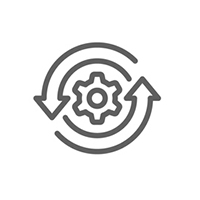 La capacité à maintenir une visibilité sur le déploiement des appareils, à obtenir des alertes et à résoudre les problèmes est l'un des aspects les plus importants de la gestion des appareils sur IoT . Dans les déploiements IIoT (industriel IoT), les dispositifs peuvent avoir une durée de vie d'une décennie ou plus. Il est donc inévitable que des améliorations de fonctionnalités, des correctifs de sécurité et des mises à jour de micrologiciels soient nécessaires au fil du temps.
La capacité à maintenir une visibilité sur le déploiement des appareils, à obtenir des alertes et à résoudre les problèmes est l'un des aspects les plus importants de la gestion des appareils sur IoT . Dans les déploiements IIoT (industriel IoT), les dispositifs peuvent avoir une durée de vie d'une décennie ou plus. Il est donc inévitable que des améliorations de fonctionnalités, des correctifs de sécurité et des mises à jour de micrologiciels soient nécessaires au fil du temps.
La maintenance des dispositifs est l'effort continu pour maintenir les dispositifs en phase avec les besoins de l'application métier, et va de pair avec la surveillance, les diagnostics et les mises à jour logicielles. Tous les exemples fournis dans les sections ci-dessus décrivent le besoin complexe d'une solution de gestion du système IoT comme Digi Remote Manager, afin d'effectuer un suivi et une maintenance continus de l'application IoT .
En l'absence d'une stratégie pour effectuer ces tâches de maintenance continue, les équipes sont obligées de trouver un moyen d'effectuer ces mises à jour manuellement. Dans de nombreux cas, le résultat est que les déploiements de dispositifs perdent en sécurité et ne sont plus conformes.
Intégration avec les plateformes en nuage et les processus d'affaires
 De nombreuses applications IoT sont conçues pour fournir des données critiques aux analystes, aux opérateurs et aux décideurs d'une entreprise. Ces activités commerciales exigent que la plate-forme de gestion des périphériques IoT s'intègre de manière transparente aux fournisseurs de clouds tiers IoT , tels que Amazon Web Services, Microsoft Azure et Google Cloud. Ceci peut être réalisé à l'aide des protocoles de gestion des dispositifs IoT et des services Web tels que MQTT et HTTP.
De nombreuses applications IoT sont conçues pour fournir des données critiques aux analystes, aux opérateurs et aux décideurs d'une entreprise. Ces activités commerciales exigent que la plate-forme de gestion des périphériques IoT s'intègre de manière transparente aux fournisseurs de clouds tiers IoT , tels que Amazon Web Services, Microsoft Azure et Google Cloud. Ceci peut être réalisé à l'aide des protocoles de gestion des dispositifs IoT et des services Web tels que MQTT et HTTP.
Nous utiliserons comme exemple Digi Remote Manager , qui est agnostique vis-à-vis des services en nuage et vous permet d'intégrer ces services tiers assez facilement à l'aide d'une interface de services Web RESTful. Digi RM fournit des outils de gestion de la communication IoT , facilite la connectivité avec vos services tiers et envoie les bonnes données à la bonne destination. Par exemple :
- Digi RM peut agir comme un facilitateur entre les périphériques tels que les routeurs cellulaires et les passerelles vers votre service de cloud tiers pour une intelligence commerciale en temps réel.
- Il peut diffuser les mises à jour et le code d'applications tierces à l'ensemble de votre installation de dispositifs déployés.
- Digi RM peut faciliter la migration de l'ensemble de votre déploiement vers une autre application tierce en nuage pour une transition transparente, si vous choisissez de changer de plateforme.
Pour plus d'informations, notamment sur l'utilisation du protocole MQTT (faible bande passante) et du protocole HTTP (bande passante plus élevée), consultez notre livre blanc, IoT Device Management : Déploiements sécurisés et évolutifs avec Digi Remote Manager.
Contextuel IoT Gestion des appareils
IoT Les déploiements varient énormément en termes de taille, de complexité, d'objectifs et d'exigences. Mais une chose est sûre. À mesure que les capacités des appareils et des réseaux IoT augmentent, le besoin de fonctionnalités sophistiquées et ciblées de la part des appareils du réseau s'accroît également. La gestion contextuelle des appareils IoT consiste à répondre aux besoins et aux variables spécifiques d'une application particulière, et est rendue possible par les plateformes de gestion des appareils IoT .
 Voici quelques exemples de haut niveau illustrant la nécessité d'une gestion contextuelle des appareils IoT , en raison de la diversité des besoins en matière de données et de fonctionnalités des appareils :
Voici quelques exemples de haut niveau illustrant la nécessité d'une gestion contextuelle des appareils IoT , en raison de la diversité des besoins en matière de données et de fonctionnalités des appareils :
- Agriculture: IoT Les dispositifs utilisés dans les applications agricoles doivent fournir toute une série de données au fur et à mesure de leur évolution, qu'il s'agisse de la température, des conditions d'humidité, de la localisation des véhicules ou même des systèmes d'irrigation mobiles.
- Lessystèmes solaires: Ces dispositifs ne se déplacent pas géographiquement, mais de nombreux panneaux solaires actuels ajustent leur positionnement en fonction de la position du soleil et des conditions météorologiques.
- Chargement des véhicules électriques: Les stations de recharge des VE peuvent être intégrées à des applications qui permettent aux conducteurs de les trouver. Elles peuvent également faire état de leur utilisation, indiquer si elles ont besoin d'être entretenues, etc. Chacun de ces types de données doit être envoyé à différents utilisateurs à des fins différentes.
Capacités et limites de la gestion de base des dispositifs IoT
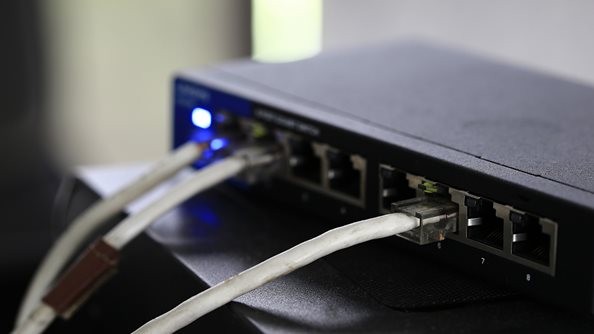 La gestion de base des périphériques IoT permet aux gestionnaires de réseau IoT d'établir et de gérer un certain nombre d'exigences communes IoT en matière de connectivité et de fonctionnalité qui concernent presque toutes les applications IoT .
La gestion de base des périphériques IoT permet aux gestionnaires de réseau IoT d'établir et de gérer un certain nombre d'exigences communes IoT en matière de connectivité et de fonctionnalité qui concernent presque toutes les applications IoT .
Gamme
La portée de communication est fonction de la gestion intégrée de l'alimentation du dispositif et des antennes intégrées au dispositif ou fixées à l'extérieur. La portée de communication est donc sous le contrôle de l'organisation, sans outils avancés de gestion des appareils IoT , mais les tests et les rapports sur la portée sont beaucoup plus faciles avec une plateforme de gestion des appareils IoT .
Bande passante
La bande passante d'une application déployée IoT est fonction des capacités intégrées de l'appareil, comme le type de modem (par exemple, 3G, 4G LTE ou 5G), et du réseau disponible. Les outils avancés (contextuels) de gestion des appareils IoT ne sont pas nécessaires pour gérer cette fonctionnalité, mais ils offrent la possibilité de tester la bande passante et d'obtenir une visibilité sur le réseau.
Autonomie de la batterie
L'autonomie de la batterie est fonction de la conception de l'appareil et de son application. Un dispositif déployé dans un puits de pétrole éloigné, par exemple, utilisera la batterie chaque fois qu'il enverra des données. IoT Les techniques d'informatique de périphérie peuvent contribuer à l'optimisation de ces processus et sont plus facilement gérées par des solutions avancées de gestion des appareils comme Digi Remote Manager.
Capacités et avantages de la gestion contextuelle des dispositifs IoT
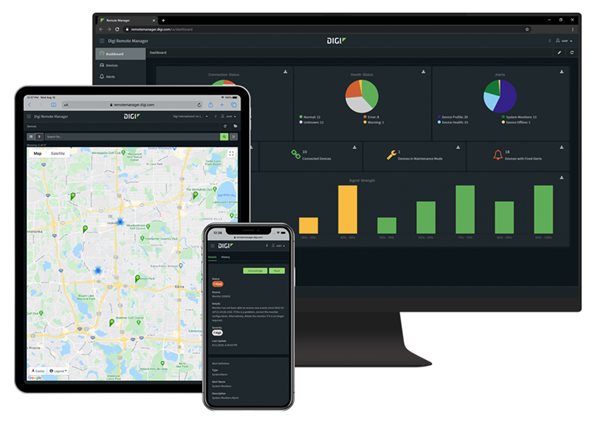 Digi Remote Manager, fournit les capacités essentielles nécessaires pour déployer, gérer et optimiser la fonctionnalité de votre réseau de périphériques en toute simplicité. Voici quelques-uns de ses principaux avantages :
Digi Remote Manager, fournit les capacités essentielles nécessaires pour déployer, gérer et optimiser la fonctionnalité de votre réseau de périphériques en toute simplicité. Voici quelques-uns de ses principaux avantages :
- Gestion à distance: Chaque périphérique d'un réseau joue un rôle important, même si les périphériques du réseau se comptent par milliers ou millions. La gestion contextuelle des périphériques IoT offre la possibilité de gérer et de mettre à jour n'importe lequel de ces périphériques à tout moment pour résoudre les problèmes ou améliorer les fonctionnalités.
- Sécurité: Les outils de sécurité intégrés permettent de détecter et de remédier aux violations de la sécurité, tout en offrant une visibilité 24 heures sur 24 et 7 jours sur 7 et en établissant des rapports sur ces incidents à partir d'une interface de gestion.
- Évolutivité: La possibilité d'accroître la taille d'un déploiement dépend de la capacité de l'organisation à surveiller et à gérer à distance les appareils à partir d'une interface de gestion centrale ou d'un appareil mobile sur le terrain. Voir notre étude de cas ElectriCities pour un excellent exemple.
- Optimisation du réseau: Pour optimiser l'utilisation des données, l'autonomie de la batterie et les fonctionnalités des appareils à la périphérie du réseau, les entreprises ont besoin d'outils pour déployer les modifications logicielles.
Gérez intelligemment vos appareils IoT

Que vous planifiez un projet IoT ou que vous cherchiez à mettre à niveau votre réseau de dispositifs déployés, la gestion des dispositifs IoT est un élément essentiel de votre planification. Les capacités d'une plateforme de gestion des périphériques IoT permettent de gagner du temps, de réduire les coûts, d'améliorer la sécurité et de fournir les outils de surveillance et de gestion essentiels dont vous avez besoin pour garder vos périphériques en ligne, à jour et optimisés pour les besoins de vos applications spécifiques. Et tous ces avantages conduisent au meilleur retour sur investissement possible.
Prochaines étapes
Note: Cet article a été initialement publié en juillet 2020, et a été mis à jour en février 2024.